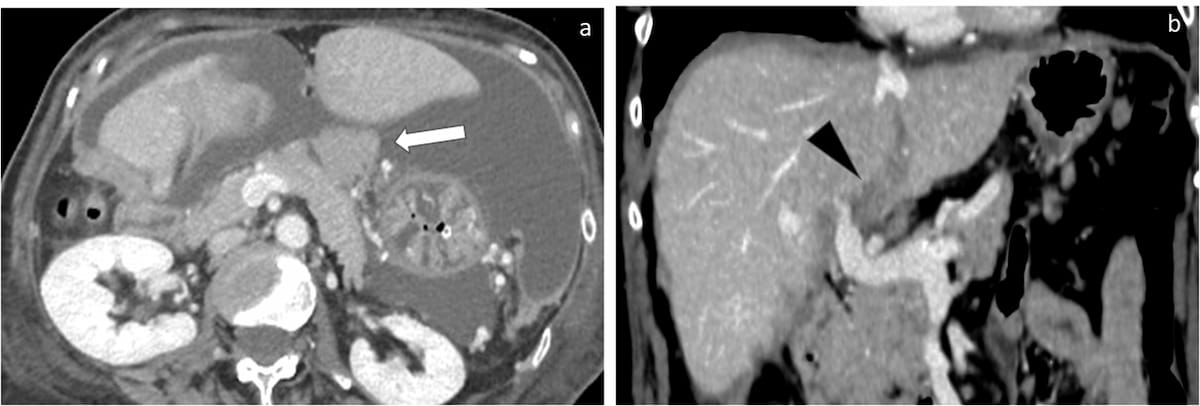Seven Takeaways from New CT and MRI Guidelines for Ovarian Cancer Staging
In an update of previous guidelines from the European Society of Urogenital Radiology published in 2010, a 21-expert panel offered consensus recommendations on the utility of CT, MRI and PET-CT in the staging and follow-up imaging for patients with ovarian cancer.
What is an optimal imaging alternative for pregnant women prior to debulking surgery for advanced ovarian cancer (OC)? Can whole-body magnetic resonance imaging (WB-MRI) improve detection of detection of serosal and mesenteric involvement in women with OC? Is chest computed tomography (CT) necessary for staging of OC?
In new guidelines from the European Society of Urogenital Radiology, panelists, recently published in European Radiology, experts from 19 institutions and 11 countries discussed the aforementioned questions and more with consensus recommendations on imaging for optimal staging and follow-up in patients with OC.
Here are seven takeaways from the guideline recommendations.
1. Citing the wider availability, cost-effectiveness and follow-up imaging capabilities, the panelists recommended contrast-enhanced computed tomography (CT) for assessment of disease extent in patients with suspected ovarian cancer (OC). For optimal imaging in this patient population, the researchers emphasized obtaining the portal venous phase with a multi-slice CT scanner and thorough review of multiplanar reconstructions.
Here one can see infiltration of the lesser sac (A) and hepatic hilum (B) on computed tomography (CT) images. The European Society of Urogenital Radiology recently provided updated consensus recommendations on imaging for optimal staging and follow-up in patients with ovarian cancer. (Images courtesy of European Radiology.)

2. Emphasizing the impact of extra-abdominal disease upon treatment considerations for patients with OC, the panelists indicated that chest CT is necessary to ensure complete staging.
3. Prior to debulking surgery in women with advanced OC, the researchers recommended CT for patient assessment. In cases involving pregnant women or cases in which iodine contrast media is not an option, an alternative imaging combination may include chest CT, abdominal MRI, and pelvic MRI, according to the panelists.
4. Prior to the treatment of OC, the panelists recommended an abdominal MRI series comprised of T2-weighted and T1-weighted MRI scans in addition to diffusion-weighted imaging (DWI) of the abdomen and pelvis. They added that spasmolytic drug administration can help reduce motion artifacts and adjunctive pineapple juice may mitigate a hyper T2-weighted effect with the bowel lumen.
5. While noting availability challenges and higher costs with WB-MRI, the panelists maintained that the modality’s combination of DWI and morphological sequences may facilitate enhanced detection of serosal and mesenteric involvement in comparison to CT and positron emission tomography-computed tomography (PET-CT).
6. The panelists noted that PET-CT may be a viable option for clarifying extra-abdominal findings, such as extra-abdominal lymph nodes.
7. Otherwise, the researchers maintained that PET-CT offers limited value in assessing patients with OC, noting challenges in diagnosing clear cell and mucinous invasive tumor subtypes as well as a failure to detect small peritoneal metastases.
Emerging AI Algorithm Shows Promise for Abbreviated Breast MRI in Multicenter Study
April 25th 2025An artificial intelligence algorithm for dynamic contrast-enhanced breast MRI offered a 93.9 percent AUC for breast cancer detection, and a 92.3 percent sensitivity in BI-RADS 3 cases, according to new research presented at the Society for Breast Imaging (SBI) conference.
Could AI-Powered Abbreviated MRI Reinvent Detection for Structural Abnormalities of the Knee?
April 24th 2025Employing deep learning image reconstruction, parallel imaging and multi-slice acceleration in a sub-five-minute 3T knee MRI, researchers noted 100 percent sensitivity and 99 percent specificity for anterior cruciate ligament (ACL) tears.